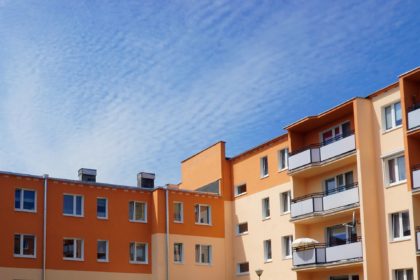
By Chantelle Gladwin-Wood (Partner) and Maike Gohl (Partner)
10 September 2020
INTRODUCTION
Properties on which residential sectional title schemes or apartment blocks are built must be billed by the City in a manner that takes into account the number of ‘dwelling units’ or ‘flats’ at the property. This is because in terms of the latest tariff schedules, each residential ‘unit’ or ‘flat’ is again entitled to 6 free kl of water per ‘month’ as defined, and to be billed in the various step tariffs for both electricity and water, depending on how much is actually consumed at the property. If the number of dwelling units or flats is not taken into account, then the body corporate or property owner (as the case may be) will be billed too much for consumption, because the step tariff will not have been applied correctly.
MEANING OF ‘DWELLING UNIT’ AND ‘FLAT’
The two essentially mean the same thing for the purposes of taking the correct number of units into account. In terms of the water tariff a ‘dwelling unit’ “means one or more rooms including kitchen/s designed as a unit for occupancy for purpose of cooking, living and sleeping which includes nearby outbuildings, sheds and granny flats within the curtilage of the property excluding multi dwellings and flats”. Multi-dwelling “means any arrangement of premises that comprises more than one dwelling unit, including semi-detached houses, simplex units, townhouses and any other arrangement of residential premises”. The water tariff does not have a definition for a flat or apartment (a dwelling unit in a multi-storey building with a communal entrance), and accordingly the writers believe it would fall within the definition of a multi-dwelling.
The electricity tariffs do not provide any definitions of ‘unit’ or ‘flat’, but do set out that multi-dwellings which are registered in terms of the Sectional Title Act and flats are to be charged on the residential tariff.
Where there are 200 sectional title homes, each with one kitchen, it is easy to determine how many dwellings there are. But where you have 40 flats, each of which commonly houses more than one single family, and rooms at the top of the building in addition with shared bathrooms and kitchens, determining how many households or dwellings there are becomes more difficult.
If the issue is unclear, you should consult an attorney, town planner, or architect for assistance.
FREE WATER
In terms of the COJ’s 2020/2021 tariffs, every dwelling unit or flat is entitled to 6 kl (6000 litres) of water per ‘month’ for free again from the 1st of July 2020. This is because the City has determined that it is within its budget to provide the free water to all households within its jurisdiction and in doing so, it is giving effect to the constitutional right of access to water.
This also means that the City cannot lawfully terminate your water supply entirely; it can only lawfully restrict the flow of water to a minimum of the free Kl’s a month.
NO FREE ELECTRICITY
There is no entitlement in our law to free electricity.
TARIFF FOR WATER AND ELECTRICITY CHARGES
Residential properties should be billed on the residential tariff, which is a stepped tariff. This means that the more water or electricity
consumed, the higher the charge per unit of
water or electricity consumed.
If the number of dwelling units or flats is not taken into account when the step tariff is applied, the incorrect number of units per step tariff is applied in the billing calculation. This results in the majority of the consumption billed for being charged the last step, which costs the most and results in the sectional title schemes or block of flats being severely overbilled.
HOW TO CHECK IF YOU ARE ON THE CORRECT TARIFF
For a residential property, look at the back page of the City’s statement and locate the charges billed for electricity and water. The first line in the block should indicate the billing period (the opening and closing meter reading dates) and the meter number. The second line should calculate how much consumption was recorded over the billing period in question through those meters. This is done by subtracting the opening reading from the closing reading.
The next line should indicate whether you are billed on a step tariff or not. Step tariffs have 8 steps for water consumption and 5 for electricity consumption. If you see calculations that include the words “step 1” up to “step 8/5” then you know that you are being billed on a step tariff.
However, if your consumption is very low, your consumption might not span all 8/5 steps, and you might only see “step 1” up to “step 3”, or whichever step is appropriate.
NOTE
Note that there is only one residential tariff for water that can apply to a multi-dwelling setting, but there are several different electricity tariffs that can apply to a multi-dwelling setting. As a result, the explanations given herein about checking your electricity tariff might not specifically apply to your property. If this is the case, and you are uncertain as to whether you are being billed correctly, consult an attorney, town planner, or rates consultant.
HOW TO CHECK IF YOU ARE BEING BILLED ACCORDING TO THE CORRECT NUMBER OF HOUSEHOLDS
Once you know how many dwelling units or flats you should be billed for, look at the line that includes the word “step”. Look at “step 1”. It should indicate that a certain number of units are billed at a certain rate, which corresponds to step 1 in the City’s prevailing tariff document. For example, it should say something like for water: “step 1: 1305.42 kl @ 0.00”.
The number appearing after “step 1” is how many units of water you are billed for in the step 1 bracket. The number appearing after the @ sign is the cost per unit of water or electricity consumed. This should correspond to the City’s prevailing tariffs.
Use this formula to check whether you are being billed correctly.
WATER
Number of dwelling units or flats x (days in billing period/30.4) x 6 = No of units consumed that should be charged for in step 1 of WATER calculations.
ELECTRICITY
Number of dwelling units or flats x (days in billing period/30.4) x 500 = No of units consumed that should be charged for in step 1 of ELECTRICITY calculations.
If the result of the calculation is lower than the consumption units charged for on the bill, then it is possible that the City is taking into consideration too many dwelling units or flats (which means that you are being under-billed). Conversely, if the result of the calculation is higher than the number of units that appear in step 1 of your calculations, you are probably not being billed for enough units and are being overbilled.
HOW TO HAVE YOUR BILL CORRECTED
The City has no particular application method to correct an incorrect recording of the number of dwelling units or flats. However, the tariffs do set out that you have to provide proof to the satisfaction of the City in this regard. In some instances, an affidavit has been enough, in others a WinDeed unit search has been sufficient. Unfortunately, there does not seem to be one uniform manner of proving this.
You can try logging a query with the City’s call centre on (011) 375 5555 or 0860 56 28 74, but it is not guaranteed that this will cause the change to be effected. You can visit a walk-in centre with proof of how many dwelling units or flats are at the property, in the form of a sectional title scheme deeds office unit list, or sectional plans. For an apartment block, you can submit plans with an architect’s certificate confirming how many dwelling units or flats there are. The CEO of City Power has advised the media that
an affidavit stipulating the number of dwelling units or flats will be acceptable in relation to electricity but it is not a guarantee that the same will be acceptable, without more, in respect of water.
You could also liaise with Johannesburg Water or City Power directly with this information, but it is not certain whether they would be approachable in this respect. It is important to record how you deal with the complaint, and remember to get a service ticket or query number as proof of your having raised the issue and asked for the correction.
If the City does not assist you within a reasonable period of time after having applied for the change, you may need to approach an expert for assistance to have your bill corrected and to claim a refund for amounts overcharged.
Caveat: Please note: this article is for general public information and use. It is not to be considered or construed as legal advice. Each matter must be dealt with on a case by case basis and you should consult an attorney before taking any action contemplated herein.



